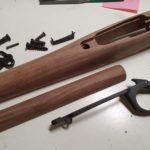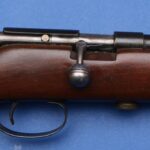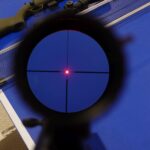
Shortly after picking up my Vortex Diamondback HD 10×42 binos, I came across a killer deal that was posted on CanadaGuns Discord: a set of Bushnell’s Engage binoculars featuring their EDX glass. I thought it’d be neat to compare and contrast the Engage vs the Diamondback, as well as check out what Bushnell was doing these days, so I bought them. Here in Canada, the Engage X goes for $220, the Engage DX is $319, and the Engage EDX is $530. In the US, the X is $129, the DX is $207, and the EDX is $363.

Bushnell Engage EDX 10×42 Specifications
- FOV: 340 ft@1000 yards or 113m@1000m
- Close focus: 8 ft or 2.4m
- Hydrophobic coating on the lenses
- Weight: 23.5oz or 666 grams
- IPX7 waterproofing
- Made in China
Engage Binocular Trim levels compared
The basic Engage X comes with fully multicoated air to glass lens surfaces, and the EXO hydrophobic barrier.
The DX model adds on dielectric coatings on the prisms.
The EDX model adds ED prime glass, prism phase coating, better ultrawide band coatings, and a lockable diopter adjustment.
What’s ED Glass?
Extra low dispersion glass keeps light from different colors from deviating too much. On a cheap optic, you’ll see this as bad color fringing and chromatic aberration, and it affects clarity.
Comparing the glass between a non EDX set of bino’s like the Diamondback HD and the Engage EDX, they’re extremely similar and you have to find special circumstances to see the difference. The Engage EDX looked better in low light, and was slightly better for resolving details.

Bushnell Engage EDX vs Vortex Diamondback HD Binoculars

Similarities: The 10×42 Engage series are essentially the same size, weight, shape, etc as the 10×42 Vortex Diamondbacks. They both use tethered front covers, they both have a coupled rear eyecup tether. The neck strap and eyepiece covers are so similar in build, that I’d have to guess they’re made in the same factory, though the Vortex’s neck straps are embroidered while the Bushnell’s have a cheaper print job on them.
Differences: I’m going to have to nit pick here, because these binoculars are very similar in features. The Engage EDX features a locking adjustable diopter on the right (to make sure both sides of the bino are in the same focus), which is cool, but the damn thing sticks out. That breaks the seal from the rear eye cup cover, which seems like a small design flaw. They should have just knurled it. In any case, if you leave the eye cup twisted out it’s not a problem, so I’ll just do that.
The EXO hydrophobic coating on the Engage binos is better than the Vortex’s. Water collects in taller droplets, and it flys off the lenses with a quick flick. Water stubbornly sticks to the Diamondback HD lenses in comparison.



While the front covers on the Vortex hang in front of the lenses and blocks the view (especially when cold), the Bushnell’s hang low and out of the way.

The focus adjustment on the Engage binoculars is very light to the touch and is a bit smoother than the Diamondback’s. The twist up eyecups on the Vortex’s feel smooth and light compared with the twitchy eye cups on the Bushnell’s.
The bino case that the Bushnell comes with is pretty crappy. They also include a cloth bag, but I’m not sure I’d ever use that. In comparison, the Vortex Diamondback’s come with a semi-rigid case. I’d chuck the Vortex case into a range box with a bunch of other heavy stuff, I wouldn’t put the Engage in for fear of damaging them.
The Engage binos come with a 20 year warranty on parts and build which is pretty good. Vortex’s warranty is better, but the Engage’s warranty isn’t too bad.
The Vortex Diamondback HD is cheaper. In the US, they’re $230 MSRP vs $350 on the Bushnell Engage EDX. In Canada, the Diamondbacks are $350, while the Engage EDX are $530. The Bushnell DX are much closer in price and like the Diamondback HD, they do not have the more expensive extra low dispersion glass.
Conclusion
The 10×42 roof prism binocular market segment is extremely competitive and you get a pretty decent value no matter the brand. If you hunt in the rain a lot, Bushnell’s hydrophobic lens coating is really going to come in handy. The smooth operation of the focus is nice, and I think they’re a pretty decent set of bino’s for the price.

















